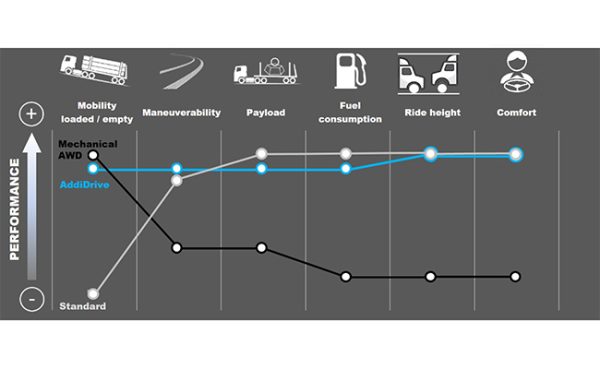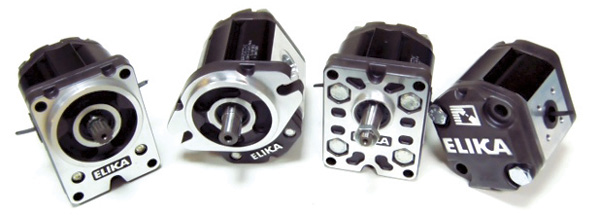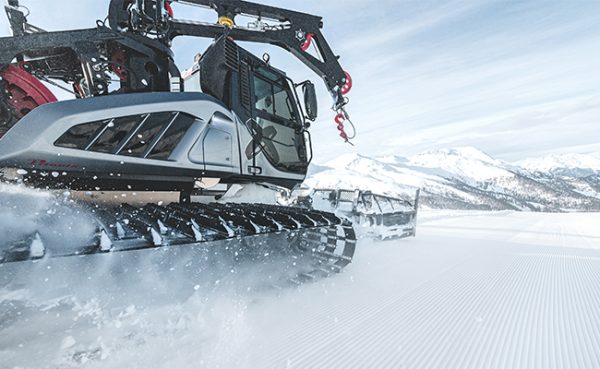Intelligent Pneumatics Move Fluid Power into the 21st Century
By Frank Langro, Director – Pneumatic Automation, Festo, and Sandro Quintero, Product Manager – Valve Terminals & Electronics, Festo

Pneumatic valve technology has remained relatively stable for more than 60 years. Over that period, developments in sealing technology have improved valve service life. Solenoid advances have increased switching speed and reduced power, but the basic directional control valve has not changed – until now. Intelligent pneumatic valves will have a broad impact on fluid power. Intelligent valves deliver the cost and performance advantages of pneumatics, as well as the variable positioning, speed profiles, and low power consumption of electric servo-control. Intelligent pneumatic valves support Industry 4.0 concepts of re-configurable modular systems and smart manufacturing. In short, intelligent valves move pneumatics into a new realm of automation components.
Before going deeper into the structure and applications of intelligent valves, it’s necessary to take a brief detour and introduce the concept of Cyber-Physical Systems.
Intelligent pneumatic valves are re-configurable Cyber-Physical Systems
The National Science Foundation describes Cyber-Physical Systems as engineered systems that are built from, and depend upon, the seamless integration of computational algorithms and physical components. The National Science Foundation Directorate for Computer & Information Science & Engineering1 observes, “Cyber-Physical System technology will transform the way people interact with engineered systems – just as the Internet has transformed the way people interact with information. New smart Cyber-Physical Systems2 will drive innovation and competition in sectors such as agriculture, energy, transportation, building design and automation, healthcare, and manufacturing.”
Cyber-Physical Systems are components or products that change functionality based on downloadable algorithms from cloud-based computing. For example, a smart phone can be a video camera, still camera, game console, media player, compass, magnifying glass, computer terminal, translation device, flashlight, GPS device, or any of dozens of other functions, depending on the capabilities of its foundational hardware and downloadable applications.
A Cyber-Physical-based intelligent pneumatic valve has foundational hardware that allows it to change functionality via a downloadable app. In other words, if a fluid power application required proportional control, directional control, and soft stop, a design engineer utilizing a Cyber-Physical valve would not need to specify multiple hardware components. He or she would instead simply specify a single part number for valve hardware, then download an app for each performance requirement. In a Cyber-Physical System, as illustrated in Figure 1, applications change the functionality while the hardware is standardized across applications.

When a single intelligent valve can replace 50 components, a whole new world opens for fluid power control
Engineers calculate that a single intelligent pneumatic valve part number can replace up to 50 different components.3 This means that a single hardware component delivers the following benefits of standardization:
- Fewer part numbers to order and carry in inventory
- Faster, easier design
- Quicker time to market
- Shorter bills of material with fewer mistakes
- Reduced assembly time and hassles
- Simpler configuration through parameterization, not programming
- Quick and easy valve replacement
- Increased reuse
Due to the unique nature of intelligent pneumatic valves, there will be a host of new capabilities, including immediate leak detection and future-fault predictive capabilities based on internal sensors and associated processing power. Valve energy consumption will be reduced by 90% over typical solenoid valves.
Learning that one intelligent valve can replace 50 different components, one might visualize a hefty component stuffed with electronics. That is not the case. Just like a smart phone, the intelligent valve is compact, the result of the valve’s unique combination of electronics, mechanics, and software.
Traditional spool and intelligent valves design contrasted
To better understand the difference between mechanical and intelligent pneumatic valves, it is helpful to look at the component architectures of the two. Mechanical valves have fixed control surfaces that provide a single or small finite number of functions. Figure 2 shows a typical spool design for a directional control valve. The control surfaces, the chamfered edges of the blue spool, are fixed – not changeable.

Intelligent pneumatic valves are based on Piezo pilot valves, left, in Figure 3, and diaphragm poppet valves, right. Each Piezo cartridge has two 2/2-way valves. The key benefits of Piezo pilot valves are their exceptionally low power consumption, about 90% less than conventional solenoid valves, their quick action, and pneumatic proportional control.
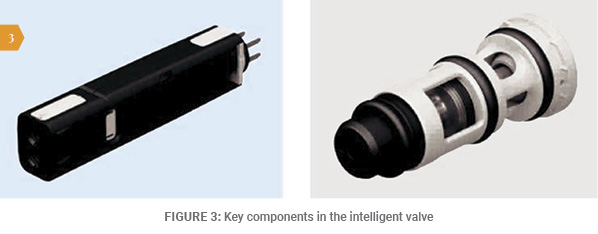
As shown in Figure 4, Piezo pilot valves and poppet valves are linked in a bridge circuit, a circuit that can replicate pneumatic valve functions.

Thanks to the integrated sensors and proportional control, which allow the valves to be pressurized and exhausted independently, this single valve technology can now be used to execute a range of conventional valve functions and full system solutions as shown in Figure 5.
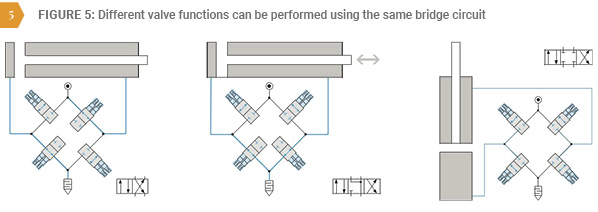
This configuration is ideal for applications with:
- Frequent format changes from pressure, travel time, speed (e.g., >1 x day)
- High demands for constant cycle time (self-regulating)
- Protection and low-vibration requirements (gentle, controlled)
- Heavy loads (>5 kg)
- High diagnostic requirements (e.g., leakage)
- High demands for pressure/flow rate control (>2 proportional valves)
- Restricted access to the drive (“built-in”)
- High energy usage (savings of up to 70%)
- Situations where acceleration and/or speed profiles are required
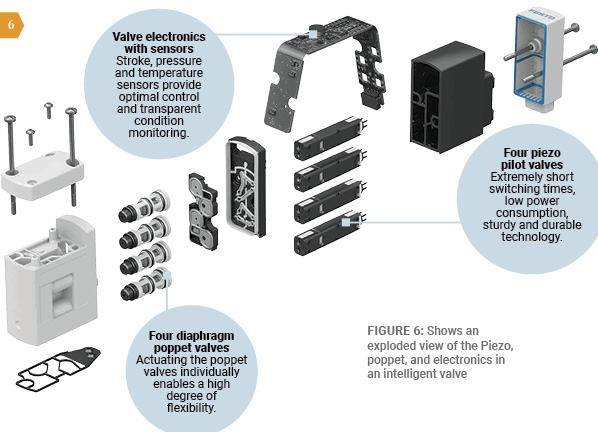
Intelligent valves require a controller and ethernet communications packaged in a valve terminal
Intelligent valves require a controller to execute application algorithms and to coordinate the interrelated activities of the valves. Figure 7 shows the components of the valve terminal, including valves (piezo and poppet), integrated controller, industrial ethernet communications module, electrical inputs for fast control of specific analog and digital applications, and integrated pressure, stroke, and temperature sensors for data analysis.
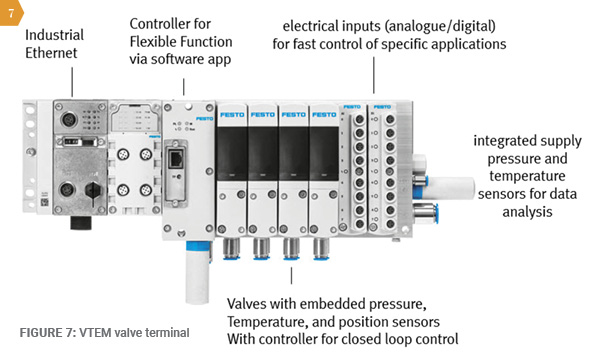
Because one valve can replace 50 different components, OEMs and end-users gain the benefits of standardization – a single part number, not 50. These advantages ripple across the lifecycle of a project from concept all the way through design, acquisition, installation, operation, maintenance, and reuse. Cyber-Physical Systems such as intelligent valves are foundational to the evolution of manufacturing, tomorrows Industry 4.0 and the Industrial Internet of Things concepts. Importantly, intelligent valves are not ideas for the future, but are available today to produce a revolution in fluid power control.
Applications are the key to changing the functionality of an intelligent valve
Valve apps can produce standard pneumatic valve functionality, such as directional control, or they can create a totally new function such as Eco Drive. Apps can be mixed and matched in an almost infinite number of ways to achieve specific functions. Apps in the following list can be parameterized through a Web configuration tool or a PLC. Parameterization leads to faster start up and quicker changes when new functions or refinements are required. The following is a partial list of apps for intelligent valves.
1. The directional control valve function app
The directional control app gives machine builders and end-users the ability to modify the intelligent valve’s standard directional control functions, including replicating 4/2, 4/3, and 3/2 at any time and as often as necessary,
even during operation. This enables organizations to respond to many requirements at the touch of a button with
a single valve platform.
2. The proportional pressure regulation app
This app saves space and hardware costs by combining the functions of two individual and independent proportional pressure regulators in just one valve.
The app also handles vacuum.
3. The Soft Stop app
Designers can shorten cycle times by up to 70% with this app. The Soft Stop app gives machine builders and end-users the means of implementing highly dynamic yet gentle positioning motion without wear-prone shock absorbers. This reduces maintenance, increases the service life of systems, and enhances productivity.
4. The leakage diagnostics app
Use of this app leads to lower system downtimes and faster fault detection. Separate diagnostic cycles and defined threshold values enable the intelligent valve to detect and localize individual leaks.
5. The ECO drive app
This app reduces costs by operating an actuator with the minimum pressure necessary for the load, eliminating the rise in pressure in the drive chamber at the end of the movement and saving energy use by up to 70%.
+ Other apps include:
- Presetting of travel time
- Proportional directional control valve
- Selectable pressure level
- Model-based proportional pressure regulation
- Supply and exhaust air flow control
Intelligent valve application notes
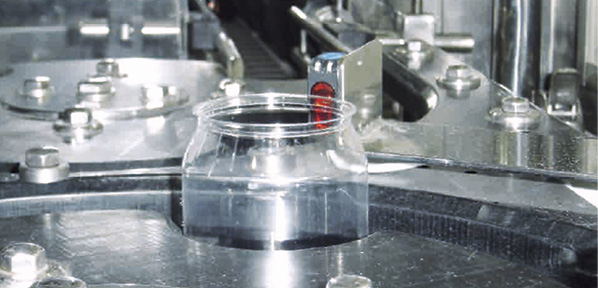
Container inspection
In this quality inspection process for containers, units were tested for stability and leaks. This process required an even, gentle application of cylinder force with a precise level of force for a specified period. The application required 60 motor controllers, corresponding sensors, 3/2-way valves, and electric cylinders. Eight intelligent valve terminals utilizing the Soft Stop, proportional pressure regulation, leakage diagnostics, and other apps replaced 64 electric cylinders. The replacement of the electric solution in favor of intelligent valves lowered the cost of the system by 70% and the installation space by 65%.
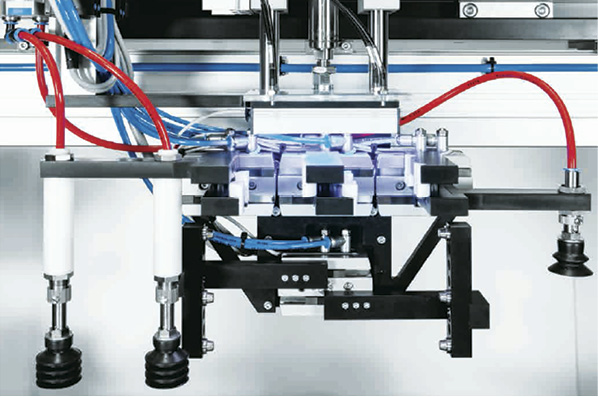
Pre-positioning, gripping, and setting down using a vacuum
The different formats in this vacuum gripping application often involved manual adjustments. The gripping vacuum and ejector pulse needed to be regulated and checked individually for every format changeover. Utilizing the apps for motion profile and positioning, as well as proportional pressure regulation, intelligent valves reduced format changeover by 20 minutes, lowered the number of components by seven, and reduced installation space by 75%.
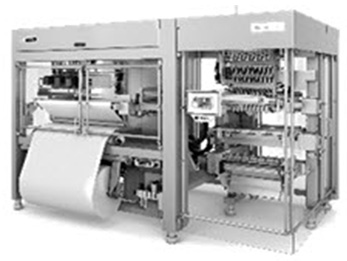 Powder filling machine
Powder filling machine
In a powder filling application, an intelligent valve terminal was utilized to control two dosing units. Proportional pressure regulation was one of several apps in this application. Processes controlled included vacuum-based product feed and distribution, adjustable cleaning and ejector pulses, process monitoring via pressure testing, and monitoring and elimination of leakages caused by powder contamination. Utilizing a single intelligent valve terminal meant fewer parts, which reduced procurement complexity.
Frank Langro is currently the Director of the Pneumatic Automation Business at Festo. Langro has represented Festo in multiple areas in support of the advancement of fluid power. He has participated in the development of national and global standards as a member of the National Fluid Power Association. He has represented Festo as an Industrial Advisory Board member for the Center for Compact and Efficient Fluid Power (CCEFP), a partnership between industry and several leading universities to steer the direction of fluid power research. Langro also holds four fluid power patents, and has attained a BS degree in mechanical engineering from Hofstra University.
Sandro Quintero is the Product Manager – Valve Terminals & Electronics at Festo. He has worked with customers across different industries such as medical, food processing, mining, automotive, and most recently, electronics and assembly. This has allowed him to acquire skills in different areas such as sales, product support, and project management. He earned a Bachelor’s degree in mechatronics engineering from the Universidad Autónoma de Ciudad Juárez and an MBA from the University of Texas at El Paso.
Sources:
1. National Science Solicitation 17-529, https://www.nsf.gov/funding/pgm_summ.jsp?pims_id=503286
2. For more information on Cyber-Physical Systems visit the Cyber-Physical System Organization at http://cyberphysicalsystems.org
3. Festo identified these 50 components that can be replaced by an intelligent valve:
18 directional control valves (9 directional control valves in 2 sizes)
8 pressure sensors (channels 1, 2, 3/5, 4; with 2x 3/2-way valves)
6 pressure regulators (channels 2, 3/5, 4 with 2 sizes)
5 components for previous soft stop applications
4 flow control valves (2x supply air, 2x exhaust air)
3 proportional flow control valves (4/3 and 2x 3/3)
2 proportional pressure regulators
2 shock absorbers
2 external sensors (model-based proportional pressure regulation)

